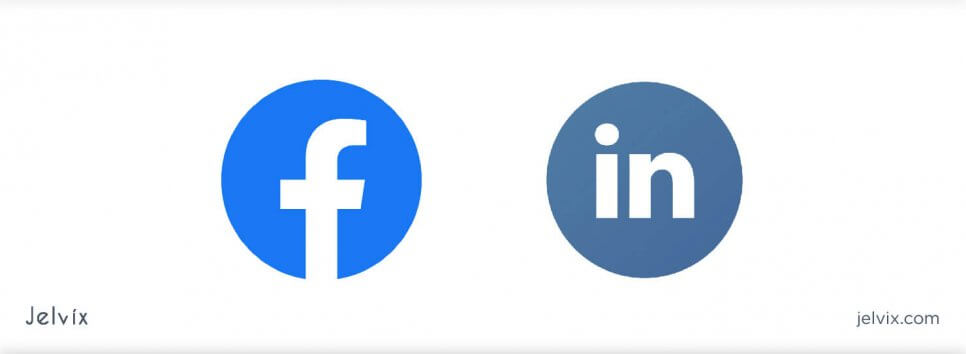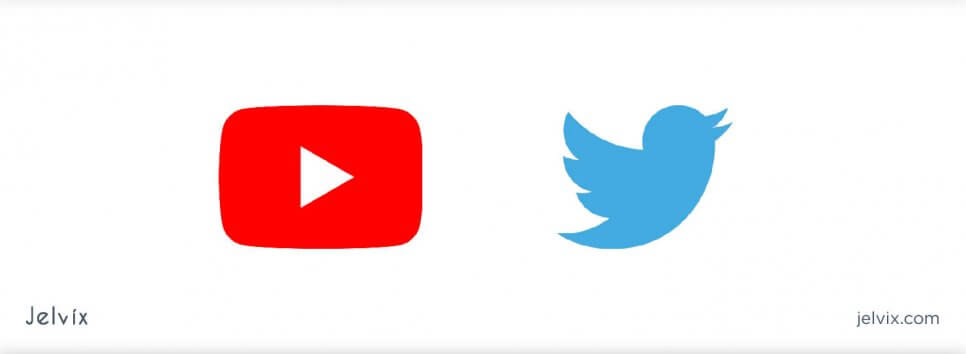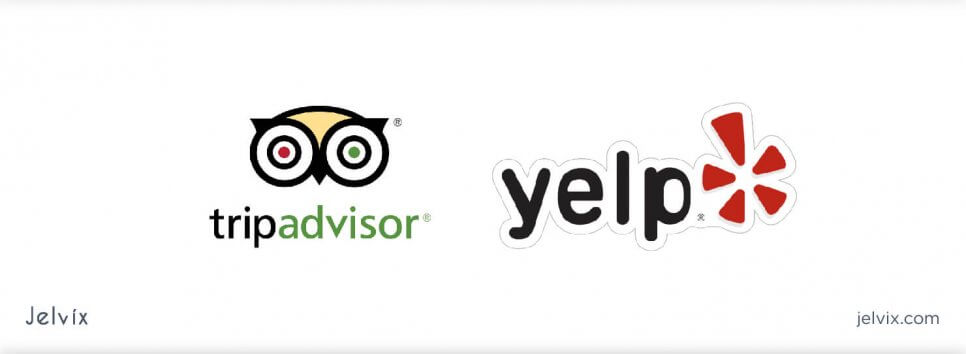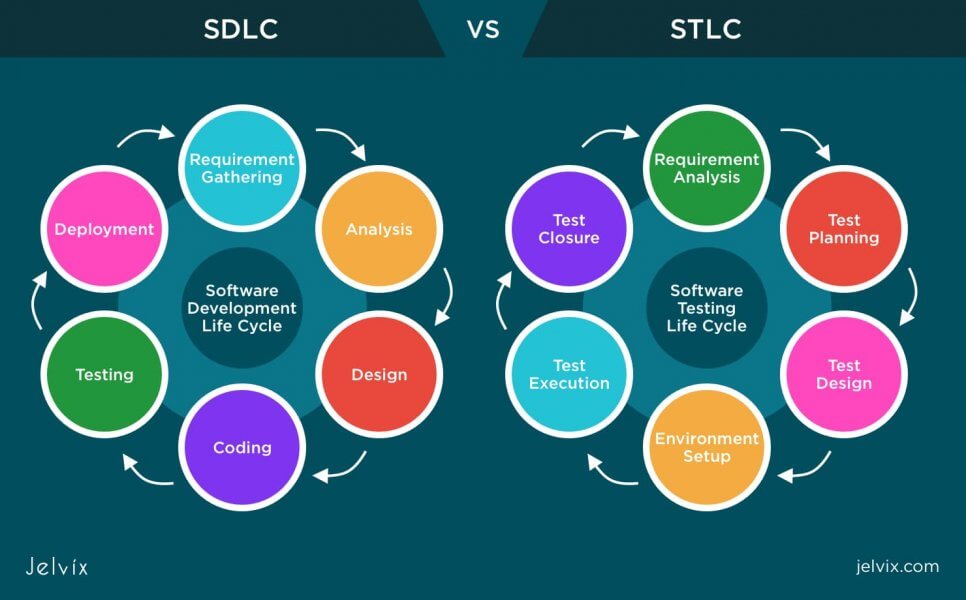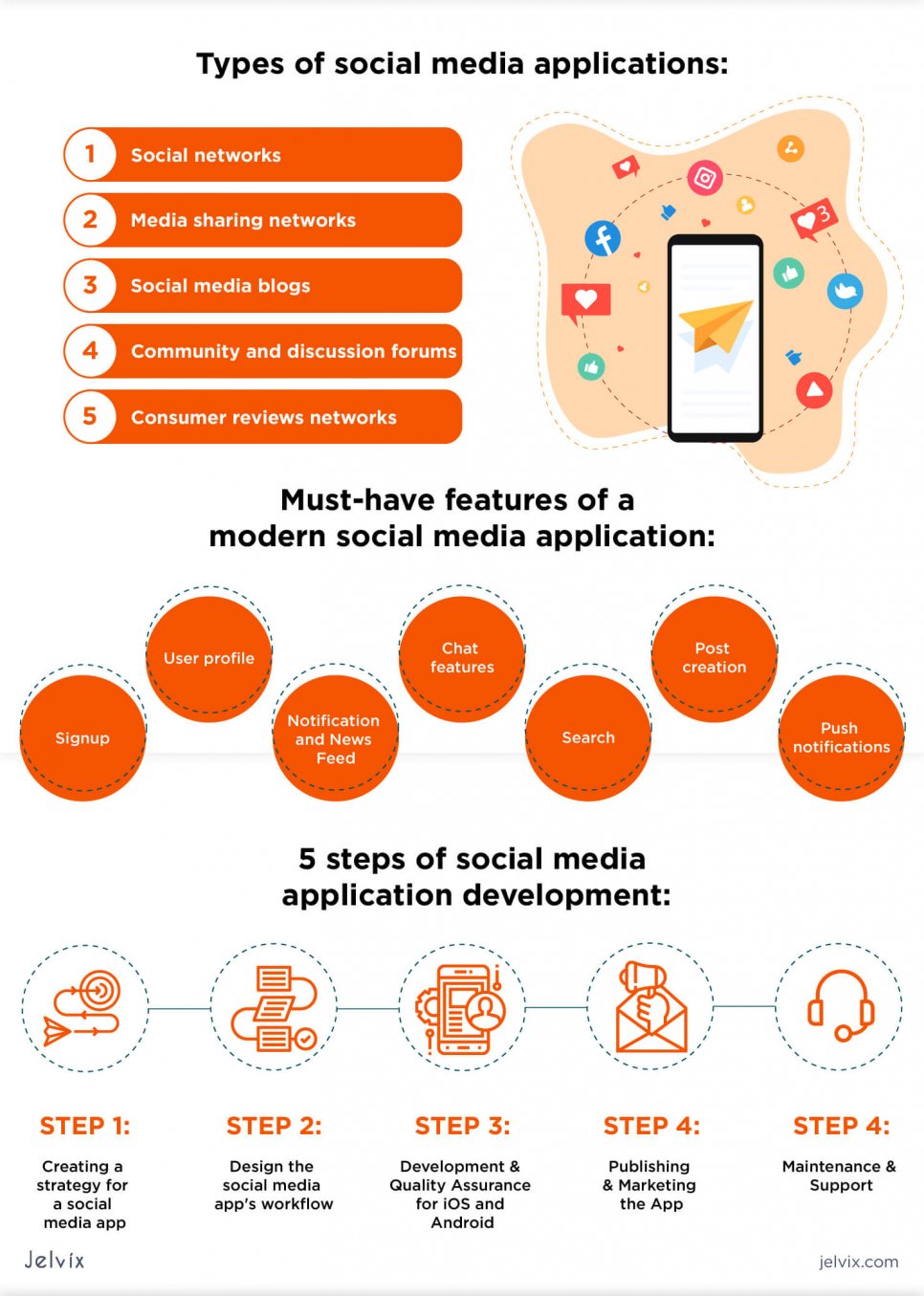Today’s digital world is ruled by “the dominant world leaders” – millennials. Indeed, the ME ME ME generation stands out for their technology use, especially social media. This is probably due to the millennials’ strong urge to share everything possible with the whole world.
Increasing demand for social media has become a great opportunity for app developers to hit the jackpot since this field brings far more revenue than any other development field today.
Because of rising market demand, application development companies are expanding their technologies beyond simple apps to exceed market expectations. In particular, tech companies are placing their bets on chat, voice, AI, and wearable applications, since these are the most widely used technology to support multi-experience application development.
Nowadays, the number of social media apps downloads is higher than any other application type. Hence, for software companies to succeed, they should concentrate their efforts on continually making improvements to the products, e.g., expanding apps to mobile.
In this guide, we are going to explain the process of building a basic social networking application, taking into account all technical and organizational aspects.
Explore the key stages of application development and best practices to streamline the process.
When creating social media applications, the first thing you start with is defining the project’s plan and formulating scenarios of possible outcomes, each backed by a sequence of procedures (SDLC stages). As you may have read on our blog recently, a well-organized SDLC and the right methodology are the two major factors contributing to a positive business outcome of your IT-project.
This time, we will focus more on application specificities, functionalities, development steps, and other equally important aspects of building a successful mobile app in 2023.
Types of Social Media Applications
Each social platform is different. For this reason, different aspects of people’s interests might be more prevalent on one platform and much less on another. So, before we deepen into the development process, let’s go through 5 major categories we can group modern social media applications in.
See the next section to familiarize yourself with them and choose the one that best fits your project objectives.
1. Social Networks
Example: Facebook, LinkedIn
Social networking apps offer new and creative possibilities to connect with people. However, not all of them share the same objectives. For instance, Facebook’s primary aim is to make people stay connected with friends and family, whereas LinkedIn’s mission statement is to link worldwide professionals to promote collaboration and productivity.
Through social networks, people around the world share and discuss their thoughts, upload -audio and -video content, modify their social profiles, etc., so, it is essential that you take these features into account when developing a social networking application.
2. Media Sharing Networks
Example: Instagram, Snapchat
The initial purpose of media sharing networks was to let users publish videos, images, and audio, and connect audiences and collaborators.
Over time, they broadened the original scope of media-sharing concept, and have become multipurpose; in other words, they have evolved into full-fledged social media platforms that not only allow people to upload their media files, but also allow them to share written content, sharing/commenting options, and even help post the content on other social media sites.
In case you are planning to create a media-sharing app, you will have to also pay attention to a crucial factor that most clients tend to neglect a little – an intuitive and user-friendly design that meets user expectations and needs.
3. Social Media Blogs
There are many blogging apps that can provide most of the traffic and conventions to your blog. Most newbie bloggers prefer tested and reviewed platforms to help them start their personal sites and build a vast and dedicated audience.
Platforms like YouTube, Twitter, and Pinterest transform the media into something accessible for users and all provide packed services needed to develop successful digital content. Whether you are a successful influencer, a business owner expecting to leverage on social media, or a student who wants to stream a makeup tutorial or post a poem, these social media apps offer all the necessary tools to help users get their content online.
To create an effective blogging app, you need to focus on blogging-specific features such as dynamic design structure, extended commenting system, and performance tracking.
4. Community and Discussion Forums
Example: Quora, Reddit
The purpose of community and discussion forums is housed in their name. These sites are primarily used to engage people in public meetings and debates; there are lots of Internet forums like Fanfiction.net, Flickr, etc., that provide a means for users to exchange views and information on various topics with friends and other individuals or organizations.
Some of the notable features of a successful forum application are vibrant profile customization and robust text editor.
5. Consumer Reviews Networks
Example: TripAdvisor, Yelp
Product review forums are intended to let customers read online reviews before purchasing a product. This makes them an important business success factor as users make an independent evaluation as to whether a particular product or service conforms to a specified standard.
Moreover, business review apps help boost business growth (in case of good reviews), acquire new leads, and retain existing consumers.
For example, users usually turn to TripAdvisor for reviews and approval before visiting a particular hotel or a spa centre; for business reviews, they choose pages like GoogleMyBusiness, Amazon, or Yelp. All these companies offer appealing mobile apps where people can find information, post reviews, rate businesses, etc., in an instant click.
How to Create a Social Media App: Must-Have Features
When you start a new IT-project, you expect it to smash all sales records. As we know, a good product is the one that embodies the best qualities and trends and stays true to its core (brand) value.
Nevertheless, it wouldn’t hurt to build an MVP version of a product before implementing its final version since working software makes stakeholders trust you more. After you test the basic version of your app, you can consider adding advanced features.
The section below focuses on a detailed listing of must-have features of a modern social media application.
-
Signup
To ensure that your users have an enjoyable and user-friendly experience, you have to provide them with different authentication options so that they can register using an existing social media account. Trust us, they’re gonna love it! Furthermore, it is better to develop several registration alternatives. For instance, you can integrate such options as phone number/email and password.
A secure password reset feature is another important step you need to consider when creating a pre-release version of your app. Try to implement a multi-factor authentication if you can. In case you rely on just User IDs and passwords, make sure to meet the requirements for password length and complexity.
-
User profile
Regardless of the type of the social media application you’re developing, the ultimate goal is to have this app provide a variety of profile customization options to enable user creativity. Apart from basic profile elements (e.g., text fields and profile photo), a good social media profile should include various personal data details and at least some profile customization features.
For example, such UX features as profile visibility, page layout, colour themes, message display format, customizing profile pictures, backgrounds, etc., will not only encourage users to create unique profiles but also help them draw other online users’ attention.
-
Notification and News Feed
A news feed feature is a data-harvesting tool that collects visual media, posts, links, and other updates people share with their audiences. The feature highlights information from accounts you’ve connected to on the platform, which means you can always personalize the sources’ updates to see actual and useful posts, or, alternatively, limit unwanted content.
The largest social networking sites like Facebook or Instagram are constantly updating and improving their news feeds to improve their users’ experience. The most important attributes a minimal app version must offer are news alerts and feed personalization.
Social media alerts keep users aware of specific updates from their favorite sites. Most social media applications implement push notifications to drive user engagement and provide a unique experience with their apps. These messages can be some kinds of promotions (special offers or discount coupons), news, updates, etc.
-
Chat features
Online chat is perhaps the most obvious attribute a social media application must possess since most users are primarily employing social media for chatting purposes. Thus, it is very important to implement a private chat option to make it possible for users to communicate and share information. Such features as instant messaging and phone calls are essential to an in-app chatting tool.
Implementing a chat feature is easy enough, but the same doesn’t hold true for media. Photos and videos are the most popular types of files to exchange, so, to provide a more enriched experience, make sure to extend chat properties.
-
Search
Bridging the gap between users on social media is possible with the implementation of a comfortable search bar. Providing a good search experience within your social media application will ensure that bloggers and friends find each other on the network. In particular, users can look for new people using one specified criterion (either by tags, usernames, or location).
-
Post creation
We have already mentioned the importance of having the news feed feature in your basic app version. Yet, it is equally crucial to let users actually post something. With no content, the news feed will be empty.
Posting and sharing content with followers is an integral part of a user’s routine on social media. All popular social media apps allow users to maximize their outreach, engage with the right people, and achieve their goals by providing extensive posting options.
Accordingly, your objective should be to let users use their visual media from the gallery, create short descriptions, add location/people, etc., to enable the approximate experience.
-
Push notifications
Push notifications are intended to notify users about the new messages, comments, or updates from people/communities they are following; this is an important CMS tool that pushes messages to make users aware of time-sensitive information through CTA.
Push notifications help to engage users in conversations and create real-time interactions, supercharge the growth of their followers, and, most importantly, keep them informed about the latest events and user updates on the fly.
However, if poorly implemented, notifications can discourage users from interacting and even prompt them to delete an application. So, to avoid the mistakes, you must gather a dedicated team to handle the development and scheduling of push alerts.
Five Steps of Social Media Application Development
At Jelvix, we developed a strategic approach to application development that best organizes the workflow from both technological and business perspectives. Generally, our expert team of devs sets down a “roadmap” for project implementation, identifying clear objectives and principles. Read on to find out how exactly we arrange the social media application development process.
Step 1. Creating a Strategy for a Social Media App
At the first stage of the development process, our team studies the category the product is placed in, selects an appropriate framework and develops APIs according to the application’s intended purpose, monitors market trends and competition. During this step, we try to assess the risks and phase out any deprecated features if needed.
It is also important to develop a marketing strategy and identify the target audience. Once we establish the KPIs, we are ready to proceed to the next developmental stage of a project.
Step 2. Design the Social Media App’s Workflow
The design involves the following steps:
- Sketching. Sketching helps to create a precursor for future software and review the number of screens, interactions, basic features, etc.
- Wireframing. This phase is considered to be the most essential in the application development process as it represents the skeleton of the future app and all the important elements mentioned in the above phase.
- Prototyping. During the prototyping phase, we use sketches to create an interactive model of an app to check whether it is able to achieve both user’s and client’s objectives. This allows us to analyze the “nature” of the design and implement necessary changes.
- Design app skins. This is the final step in the design development process. Here, we transform wireframes into a visually beautiful presentation of a social media app design.
Step 3. Development & Quality Assurance for iOS and Android
When the prototyping stage is completed, our skilled team starts to build the app’s back-end by arranging a base server, creating APIs, and developing several storage solutions. The result is an absolutely top quality IT-product that meets the client’s specifications and fulfills its intended purpose. We also collect and measure users’ feedback to address possible shortcomings.
Our iOS and Android specialists, as well as the community members, will help you make the right choice regarding the social media application type. Please contact us if you are interested in scheduling a consultation.
In our recent post, we wrote about the importance of SDLC and STLC. We have learned that application development and testing cycles run together, reinforce each other, and even span their phases.
Accordingly, at this very stage of development, we design test cases and automate routine tests so that they can run in parallel with manual testing. This is done to save the testing time and accelerate the release of the final version of the product.
Our testing teams combine different types of software testing methods to best validate the software and uncover possible defects or bugs.
Moreover, we examine all the aspects of the user’s interaction with the application; during UX testing, we check logical structures of user experience – interaction design, visual design, usability, and human-computer interaction – to determine the best way for the application and its elements to interact with the user.
Step 4. Publishing & Marketing the App
At Jelvix, we conceive, design, and ensure the process of publishing, create promotional campaigns and materials, including screens and video guides. We believe that engaging customers is crucial in the software release.
So, our skilled marketers develop an effective product description strategy to help you boost sales, maintain business relevance, and target your client. All these processes are critical over the period from the introduction of a social application to the market until it reaches its end user.
Step 5. Maintenance & Support
We help startups and enterprises with post-release application updates and 24/7 support. You can find more information about support & maintenance here.
Conclusion
This guide is intended to outline the strategy, design, and basic development process we follow at Jelvix. We hope that it will help you determine the format and type of your future social media application as well as formulate a working approach to software development and testing cycles.
Our professionals offer vast expertise in app development for iOS, Android, UI/UX design, integration of various services (AI, Cloud, and Big Data), completely tailored to your special requirements. If you are interested in any of our services, feel free to contact us!
Need a qualified team?
Unlock new business opportunities with the first-rate dedicated development team.




